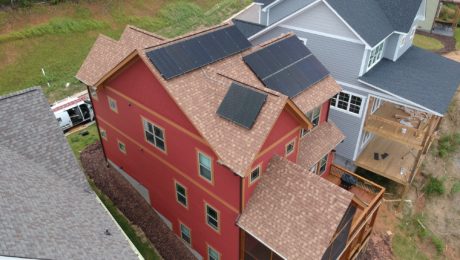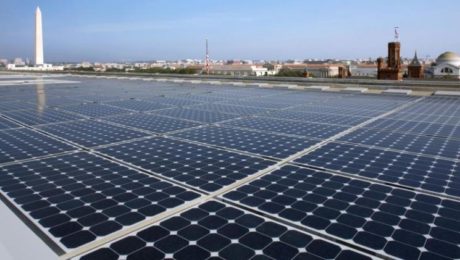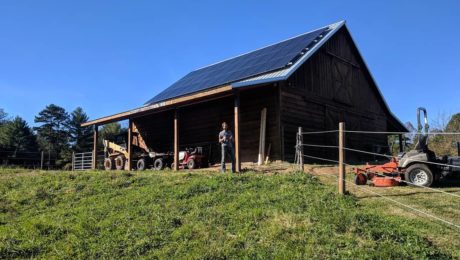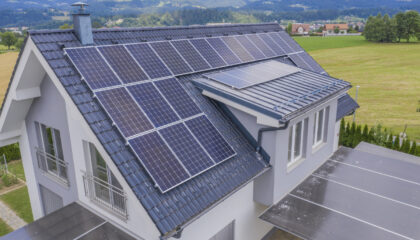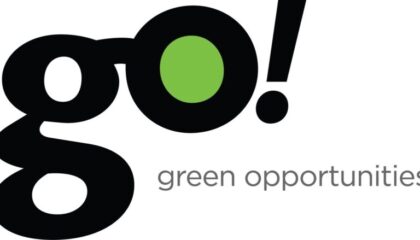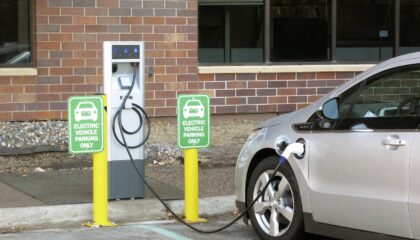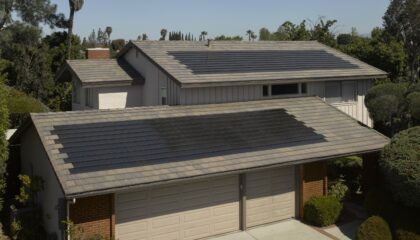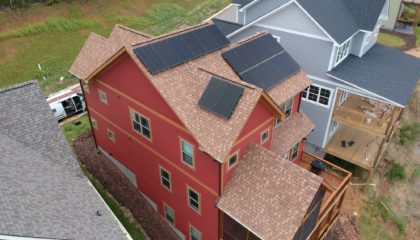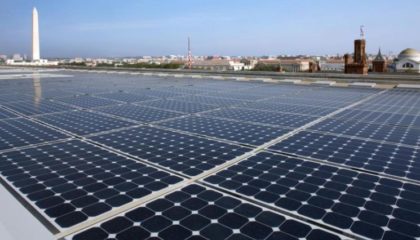Duke PowerPair Program’s Bright Opportunity for North Carolina Homeowners
The Duke PowerPair program is a beacon of innovation in renewable energy, specifically tailored for homeowners in North Carolina. Launching in the spring of 2024, this initiative is not just a financial incentive program; it’s a bold statement in the fight against climate change. It represents a significant shift towards sustainable living, allowing homeowners to contribute positively to the environment while reaping more affordable benefits of solar technology.
The Program’s Structure and Incentives
Duke PowerPair stands out for its generous financial incentives. Homeowners who choose to install solar panels and battery backup systems can receive rebates up to $9,000, depending on their level of investment in solar and storage capacity. This program is particularly appealing because it makes solar energy not only more accessible but also more affordable. Reducing the upfront costs of solar installation breaks down one of the biggest barriers homeowners face in adopting renewable energy solutions.
Environmental and Financial Benefits
The environmental impact of joining the PowerPair program is profound. Participants will directly contribute to reducing carbon emissions, a critical step in combating global warming. Moreover, the financial implications are equally enticing. Over time, the savings on energy bills can be substantial, and the increased value of their property is a bonus. This program isn’t just about immediate returns; it’s an investment in a sustainable future.
Two Paths to Solar Empowerment
What makes Duke PowerPair particularly appealing is the flexibility it offers. Cohort A is ideal for those who prefer more control over their energy usage and costs with a Time-of-Use rate. This option is perfect for homeowners who want to maximize their energy savings by adjusting their energy consumption patterns. Cohort B, where Duke Energy manages the battery, is suited for those who prefer a more hands-off approach but still want to benefit from the advantages of battery storage. This dual-path approach ensures that a broader range of homeowners can find a suitable option that aligns with their lifestyle and energy goals.
Navigating the Application Process
The application process for the Duke PowerPair program begins on May 10, 2024, and is designed to be straightforward and user-friendly. However, interested parties must act swiftly with the cap set at 6,000 homeowners. The program’s popularity might lead to a shift to a lottery system to ensure a fair selection process. Prospective participants should stay informed about the application details and prepare their documentation well to ensure a smooth application experience.
A Step Towards a Greener Future
The Duke PowerPair program offers more than just financial savings; it’s a step towards a greener, more sustainable way of living. By participating, homeowners in North Carolina can play a pivotal role in the transition to renewable energy, setting an example for communities nationwide. This program is not just about harnessing the sun’s power; it’s about empowering individuals to positively impact the environment and their community while also benefiting from economic incentives.
For those considering a shift to solar energy, the Duke PowerPair program is an opportunity worth exploring. It’s a chance to be part of a movement that’s beneficial in the short term and transformative in the long run.
If you’re ready to embrace a brighter, more sustainable future, the Duke PowerPair program is your gateway. Reach out to us at SolFarm Solar Co. for expert guidance and support. Our team is ready to assist you in understanding the program, evaluating your options, and taking the necessary steps to harness solar energy for your home.
- Published in Solar Energy, Solar News
Maximizing Your Savings: Understanding the Federal Solar Tax Credit
Solar energy isn’t just a smart choice for the environment – it’s also a savvy move for your wallet. The federal solar tax credit, a key financial incentive, has made the leap into solar energy more appealing and attainable for homeowners nationwide. This guide will explore the ins and outs of this tax credit, shedding light on how it works, who qualifies, and the steps you need to take to benefit from it. Understanding this credit can make a significant difference in your solar energy investment, ensuring that you contribute to a greener planet and optimize your financial returns.
What is a Tax Credit Anyway?
Let’s start with the basics. A tax credit is a reduction in the amount of taxes you owe. Unlike deductions, which lower your taxable income, credits are more advantageous as they directly reduce your tax bill on a dollar-for-dollar basis. Imagine you owe $3,000 in federal taxes and are eligible for a $1,000 tax credit; your tax bill drops to $2,000. It’s an effective tool to encourage certain investments, like solar energy, by easing the financial burden on taxpayers.
Shining Light on the Federal Solar Tax Credit
The federal residential solar energy credit is not just another tax incentive; it’s a substantial financial benefit for homeowners who adopt solar technology. This credit allows individuals to claim a specific percentage of the total cost of their solar photovoltaic (PV) system on their federal income taxes. The percentage of the credit depends on when the system was installed. For instance, systems installed in 2020 and 2021 are eligible for a 26% credit, while those installed between 2022 and 2032 can claim a 30% credit. However, it’s essential to note that this generous incentive only lasts for a while. After 2032, the credit decreases and eventually phases out by the end of 2035. This timeline creates a sense of urgency for homeowners contemplating solar power, emphasizing the need to act sooner rather than later to maximize their financial benefit.
Eligibility: Who Can Soak Up the Sun?
Determining eligibility for the solar tax credit is straightforward but crucial. First, your solar PV system must have been installed between January 1, 2017, and December 31, 2034. It’s also important that the system is located at a residence in the United States and that you own it. Ownership can be direct, such as purchasing it outright or through financing, or indirect, like buying an interest in a community solar project. However, if you’re leasing the system or simply buying electricity from a community solar project, you won’t qualify for the credit. These eligibility criteria aim to ensure that the tax credit benefits are directed toward individuals who have invested directly in solar energy.
Covered Costs: What’s Included?
The range of expenses that qualify for the tax credit is quite comprehensive, which is excellent news for homeowners. These expenses include the cost of solar PV panels, contractor labor for onsite preparation, assembly, or original installation, and necessary balance-of-system equipment such as wiring, inverters, and mounting gear. Additionally, energy storage devices with a capacity of 3 kilowatt-hours or more, installed after December 31, 2022, are eligible. It’s important to note that these devices must still meet the installation date requirements for the credit. Even the sales taxes on these eligible expenses can be included, further increasing the financial benefits of going solar.
Balancing Other Incentives with the Federal Credit
Understanding how the federal solar tax credit interacts with other incentives is crucial for accurately calculating your potential savings. Generally, utility rebates for solar installation are subtracted from your system costs before you calculate your tax credit. This ensures that the credit is calculated based on your net investment in the system. On the other hand, payments received for renewable energy certificates, often considered taxable income, do not reduce your federal tax credit. State government rebates usually don’t reduce your federal tax credit either. This complex interplay of incentives underscores the importance of careful calculation to maximize your benefits.
Navigating Special Cases
The federal solar tax credit is quite accommodating regarding different homeowner scenarios. Whether you’re not a homeowner but contribute to a cooperative housing corporation or a condo, have installed solar on a vacation home, or live off-grid, there are provisions to include a wide range of situations. The versatility of this credit makes it accessible to more than just traditional homeowners, expanding the potential for solar adoption. Furthermore, financing your solar PV system does not exclude you from claiming the credit, making solar energy more accessible regardless of immediate financial resources.
Answering Your Burning Questions
When it comes to tax credits, there’s always a flurry of questions. Most notably, this is a nonrefundable credit, meaning it can reduce your tax bill to zero without a cash refund. However, if the credit exceeds your tax liability, you can carry it over to the next year. There’s no cap on the amount you can claim, which is particularly beneficial for larger installations. And while you can’t claim the credit for used equipment, you can use it against your regular federal income tax and the alternative minimum tax, adding to its flexibility.
Claiming Your Piece of the Sun
Claiming the solar tax credit requires careful attention. After verifying your eligibility and understanding the intricacies of the credit, the next step is to complete IRS Form 5695 and attach it to your federal tax return. This process is straightforward, but the importance of accuracy must be balanced. A mistake here could mean missing out on significant savings. It’s always a good idea to seek professional tax advice to ensure you’re fully leveraging the benefits of the solar tax credit.
A Bright Future Awaits
The federal solar tax credit is a powerful incentive that significantly reduces the financial barriers to solar energy adoption. By understanding and utilizing this credit, homeowners can contribute to environmental sustainability and enjoy considerable tax savings. As solar technology becomes increasingly mainstream, this tax credit is a key factor in making solar installations more accessible and appealing. If you’re considering the switch to solar, there’s no better time than now to explore your options and take advantage of these financial benefits.
At SolFarm Solar Co., we’re committed to helping you navigate the path to solar energy, ensuring you make the most of every opportunity for savings and sustainability. Contact us for personalized assistance and start your journey to a brighter, greener, and more financially savvy future with solar energy.
- Published in Solar Energy, Solar News
Solar Panels Increase Home Resale Value
Anyone who has lived near Asheville, NC for any amount of time has seen how competitive the real estate market has become. There are homes being built and sold every day at a premium. A recent study has shown there is an earth-friendly way to increase the resale value of your home (vs a kitchen or bath remodel) and make it more appealing to buyers amongst the myriad of other listings.
Real Estate Resale Study
A yearlong study by Zillow.com has shown that installing a Solar Energy System on your residence will increase the value by over 4%. In Asheville, the average home sale price is $284,500 which would result in raising the listing price by at least an additional $11,380. Another study by Berkeley Lab and the US Dept. of Energy found home buyers are willing to pay over $15,000 extra for a home with an already installed solar energy system. Both of these amounts are above the net cost for installing an average sized solar energy system, making the homeowner extra cash even before considering net metering savings on electric utility bills.
One of the most common worries we hear from people interested in residential solar is that they may have to sell their home or are unsure if they will move in the next few years. This should make their decision even easier! It truly is a no-brainer to make the switch to use clean and renewable energy, lower utility bills, and make money when it comes time to sell your home.
Going Solar For Less
For those interested in solar financing, SolFarm offers zero down, unsecured, penalty free (pay the loan off whenever you like) solar loans. Combining a solar loan with the Duke Energy rebate, and the Federal ITC (30% until the end of 2019! Drops to 26% January 2020.), can help you go solar for a whole lot less than you may expect. Contact us for your free quote!
Read More:
https://emp.lbl.gov/sites/default/files/lbnl-1002778.pdf
https://www.zillow.com/research/solar-panels-house-sell-more-23798/
- Published in Solar Energy, Solar News
DC’s Ambitious Clean Energy Requirement
Recently, Washington D.C.’s city council voted unanimously to require the district to use 100% renewable energy by 2032. Additionally, all public transport vehicles and privately-owned fleets will be required to be emissions free by 2045. With the threat of climate change becoming more and more prevalent, this fast-tracked plan will hopefully set a precedent across the country. Quite a few cities have already set renewable energy goals, but D.C. has by far the biggest. There are only two statewide policies, in California and Hawaii, of becoming 100% renewable energy dependent. As we see federal regulations becoming more lax, it is inspiring to see so much change at the lower levels of government.
Much of the funding for this initiative will come from large utility companies who will be making payments into the Renewable Energy Development Fund. Some D.C. residents are already paying additional rates for using natural gas and electricity, which have been funding the REDF. Part of the funding will be allocated to low-income residents, as transitioning a home to clean energy can require more of an upfront cost.
With this push for clean energy, we are pleased to see a boom in solar energy. Washington D.C. mandated that at least 10% of its energy be from the sun by 2041. On the other side of the country, California has already implemented a requirement that every new construction build to include solar panels. There have been countless smaller solar subsidies in other areas that have progressed the industry; including North and South Carolina.
Read more:
- Published in Climate Change, Policy, Solar News
USDA Grants & Loans For Renewable Energy & Energy Efficiency
With all the recent talk about the Duke Energy solar rebate there has been little highlighting of funding available for rural businesses and agricultural producers provided by the United States Department of Agriculture. Small businesses in rural areas and many agricultural producers are eligible for guaranteed loans and unrestricted grants to help finance energy efficiency programs. To see if your business is located in a designated rural zone click here.
There are no location restrictions on agricultural producers if 50% of their gross income comes from agricultural operations.
USDA currently offers grant funding up to 25% of the total cost of a project and loans funding up to 75% of the total cost of a project. This program makes achieving energy efficiency for small and rural businesses an attainable goal. This funding may be applied not only to solar energy systems but to hydro-power, wind generation, biomass, and high efficiency HVAC systems.
The goal of this program is to increase energy supply from the private sector and provide more independence for people located further from big energy hubs. Taking large demands off the grid brings down demand and cost for everyone while also providing jobs to local alternative energy installers.
Similar to the Duke Rebate, there are deadlines to apply for these incentives. Click here for the official North Carolina USDA website for details about eligibility, deadlines, and financial statistics about these loans. The South Carolina USDA webpage can be found here.
Give us a call and we can tell you if your company qualifies for a USDA grant and/or loan for your solar energy project.
- Published in Solar Energy, Solar News
Australia Offering Battery Subsidies
Similar to the rebate that Duke Energy is offering locally here in North Carolina to its customers for the installation of solar energy, the Southern Australian government has just announced a $70M subsidy for residential battery systems. Currently, batteries are by far the most expensive aspect of a solar energy system but are not necessary components unless your goal is to be completely off-grid or have sustainable backup power during power outages. Adding batteries to a solar energy system can tack on an additional $10,000 or more, but this subsidy would offer up to $6,000 back to homeowners; making batteries a more realistic option.
The goal of the battery subsidy is to provide 40,000 households with energy storage systems to reduce peak hour energy usage. Removing this large of a load from the grid will drastically reduce demand of traditional energy power plants thus lowering the cost of energy for every customer.
For traditional energy sources, such as coal fired power plants, it is very costly to ramp up production to meet peak demands. Unexpected peak demands are worse in that, in some cases, it may take hours for a plant to drastically increase production to meet an unplanned, sudden demand. Unexpected peak demands can cause blackouts (loss of power) and brownouts (low voltage) in the event that the power plant cannot meet the sudden increase in load.
Hopefully we can expect more clean energy incentives such as this in the US as we see the positive implications they have had in other progressive countries.
Interested in a free quote for battery backup power for your home or business? Give us a call!
Click Here for more information and original article.
- Published in Policy, Solar News



